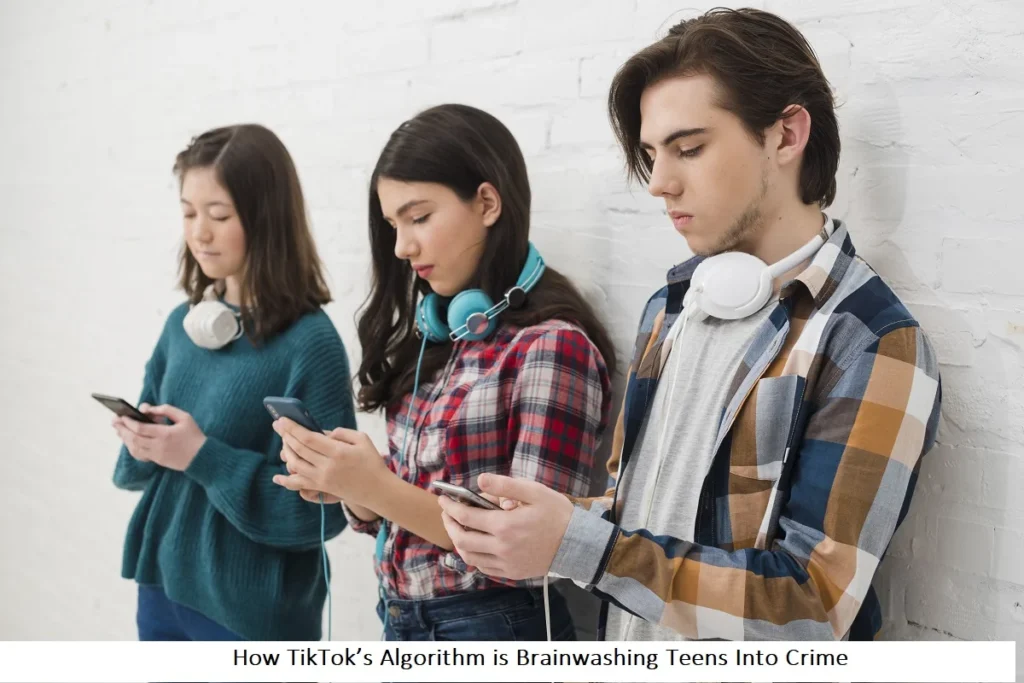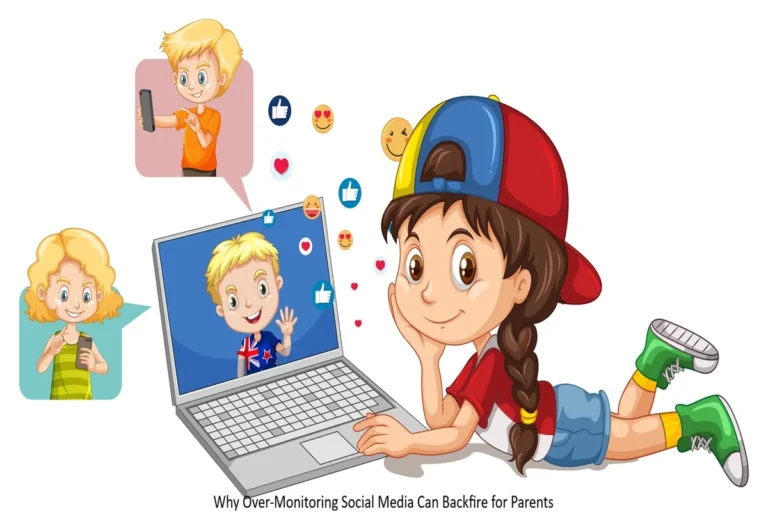
In September 2023, a 14-year-old in Los Angeles was arrested after robbing a convenience store—not for money, but to recreate a TikTok trend called “The Heist Challenge.” His video, set to a trending hip-hop track, garnered 300,000 views in 24 hours before his arrest.
This isn’t an isolated incident. From “devious licks” (school vandalism) to “Orbeez gun attacks” (assaults with gel pellets), social media trends are fueling a new wave of juvenile delinquency.
But here’s the disturbing truth:
It’s not just bad kids making bad choices.
TikTok’s algorithm is scientifically designed to push extreme content—and teens’ brains are paying the price.
1. How TikTok’s Algorithm Rewards Criminal Behavior
The Dopamine Feedback Loop
TikTok’s AI doesn’t care about right or wrong—it cares about engagement. The more shocking the content, the more it gets promoted.
- Case Study:“The Devious Licks Challenge” (2021)
- Teens stole fire extinguishers, smashed toilets, and even ripped sinks off walls to post their “licks.”
- The trend racked up 7 billion views before TikTok intervened.
- Why it spread? The algorithm boosted the most extreme clips, rewarding escalation.
- The “Clout Hierarchy” Effect
- Research shows teens who go viral for crime gain social status.
- Example: A Florida teen gained 50,000 followers after posting a stolen car joyride.
2. From Trends to Gangs: The Digital Recruitment Pipeline
How TikTok Glorifies Gang Culture
Gangs no longer recruit just on street corners—they do it on TikTok Live.
- Drill Music & Symbolism
- Teens mimic gang hand signs, flash guns, and taunt rivals in videos.
- In London, TikTok drill posts have been linked to real-life stabbings.
- The “Clout = Credibility” Problem
- A 2023 study found 1 in 5 teen gang members joined after seeing “cool” gang content on TikTok.
Real-Life Example:
In Chicago, a 16-year-old was killed after his gang-related TikTok taunts led to a retaliatory shooting.
3. The Brain Science Behind the Madness
Why Teens Are Especially Vulnerable
This isn’t just about “bad kids”—it’s about developmental psychology.
- Prefrontal Cortex Hijack
- Teens’ impulse control isn’t fully developed (until age 25).
- TikTok’s rapid-fire, high-dopamine content overrides rational decision-making.
- Desensitization Effect
- Watching 100s of fight videos normalizes violence.
- A 2024 study found teens exposed to violent TikTok clips were 3x more likely to assault someone in real life.
Shocking Stat:
After the “Slap a Teacher” challenge, U.S. schools reported a 200% spike in classroom assaults.
4. Who’s Responsible? (Spoiler: It’s Complicated)
TikTok’s Role
- Their Claim: “We remove harmful content.”
- Reality: The algorithm promotes it first, bans it later—after damage is done.
Parents’ Role
- 63% of teens use TikTok without parental controls.
- But can parents really fight an AI designed to addict?
Lawmakers’ Failures
- While Congress debates banning TikTok, Meta (Instagram/Facebook) uses the same tactics with no consequences.
The Bottom Line:
We’re all lab rats in a social experiment nobody consented to.
5. Solutions: How to Fight Back
For Parents:
- Delete TikTok? Extreme, but some psychologists say under-16s shouldn’t have it.
- Use “Family Pairing” mode to restrict dangerous hashtags.
For Schools:
- Teach digital literacy (how algorithms manipulate behavior).
For Lawmakers:
- Regulate algorithms like tobacco—force transparency on content boosting.
- Hold platforms legally liable (like the 200+ lawsuits against Meta).
Conclusion: Rewriting the Code
TikTok isn’t “just an app.” It’s a behavioral shaping tool more powerful than any parent, teacher, or cop.But here’s the hope: Algorithms are man-made. They can be unmade.The first step? Stop pretending this isn’t happening.
Understanding root causes helps us support teens better. Prevention and early help are the best ways. Find more details here:
- Why Teens are Attracted to Guns
- Addressing Juvenile Delinquency:How Society and Parents Can Make a Difference
- Juvenile Delinquency: Understanding Why Teens Commit Crimes
FAQs
Child psychologists explain that teens learn by observing others. When risky or illegal behavior is repeatedly shown and rewarded online, it can feel normal or even attractive to young viewers. This effect is stronger when consequences are not clearly shown.
Sources: American Psychological Association (APA)
Teen brains are still developing the ability to control impulses and judge risk. Fast-paced, highly emotional videos can overpower careful thinking, making teens more likely to act before considering consequences.
Sources: National Institute of Mental Health (NIMH)
Yes. Health and education authorities have documented cases where online challenges led to vandalism, school violence, and injuries. When peers reward these actions with likes and attention, teens are more likely to copy them.
Sources: Centers for Disease Control and Prevention (CDC); American Academy of Pediatrics (AAP)
TikTok’s system promotes content that keeps users watching longer. Research shows that shocking or extreme videos spread faster, meaning teens may be exposed to harmful content before it is removed.
Sources: APA reports on social media design
Experts recommend active involvement: setting screen-time limits, using parental controls, discussing online trends openly, and teaching children how social media algorithms influence behavior.
Sources: American Academy of Pediatrics (AAP)
No. Child development specialists agree that teen behavior is shaped by many factors, including family support, peer influence, mental health, and environment. Social media is one influence—not the sole cause.
Sources: World Health Organization (WHO); APA


